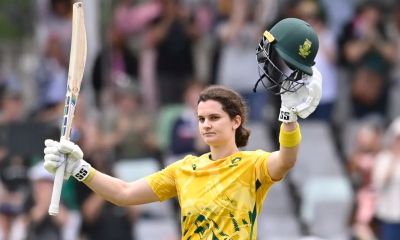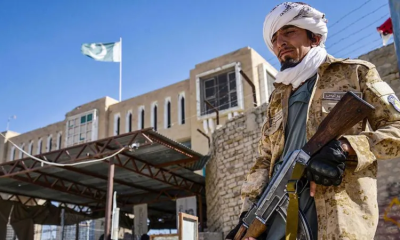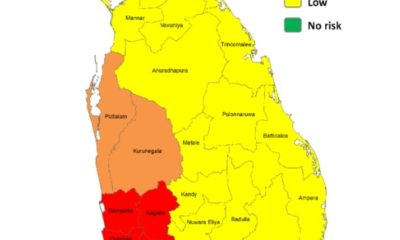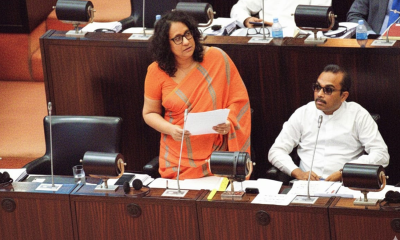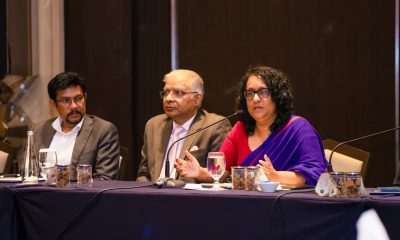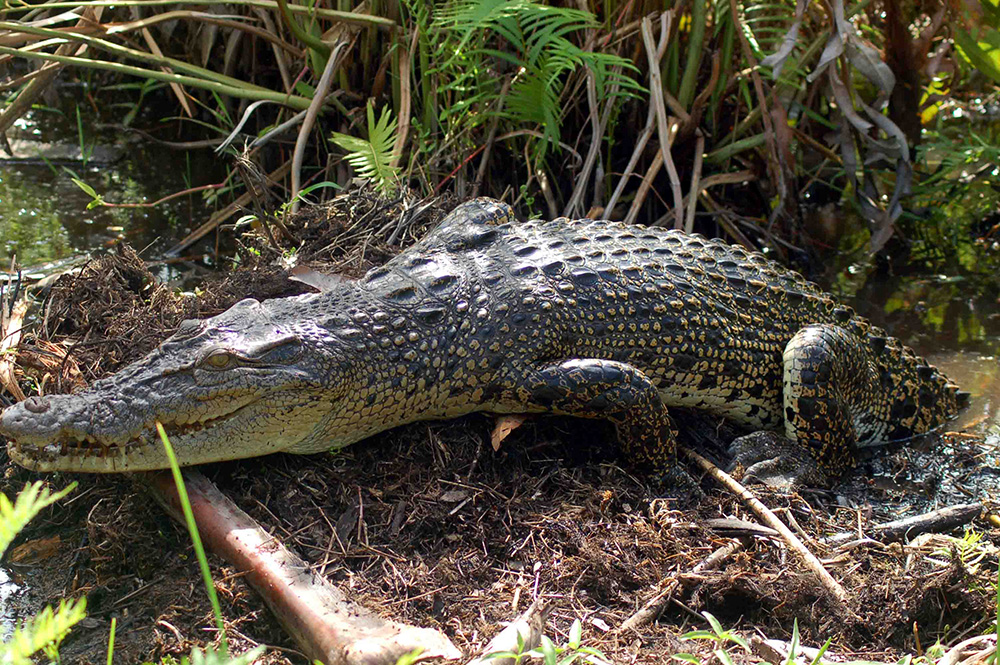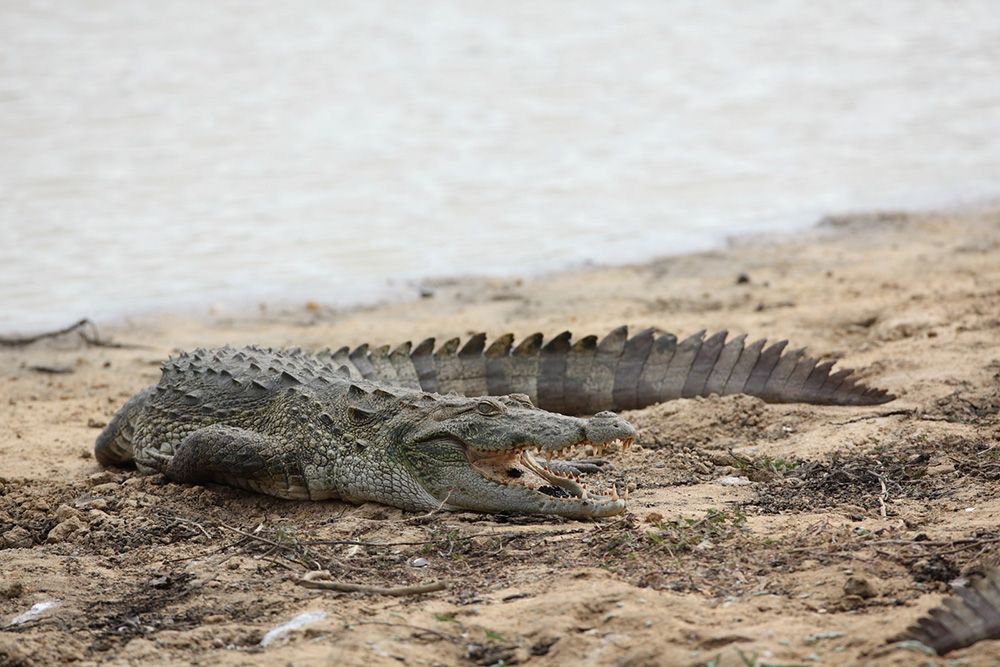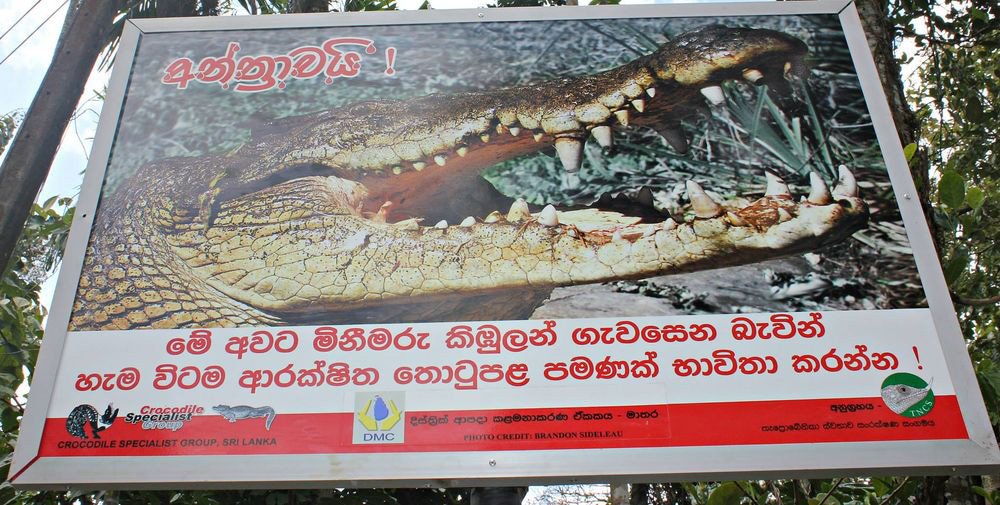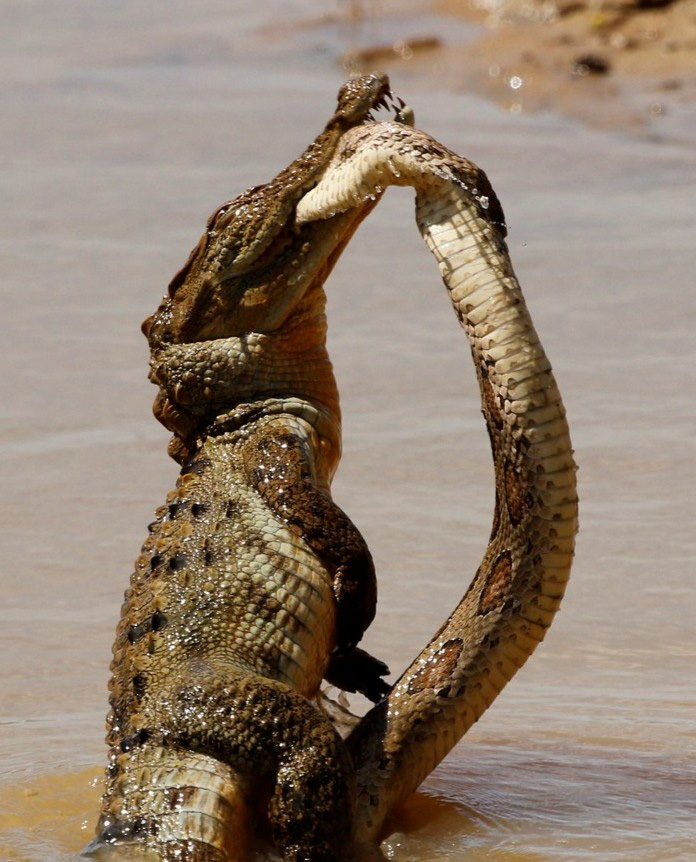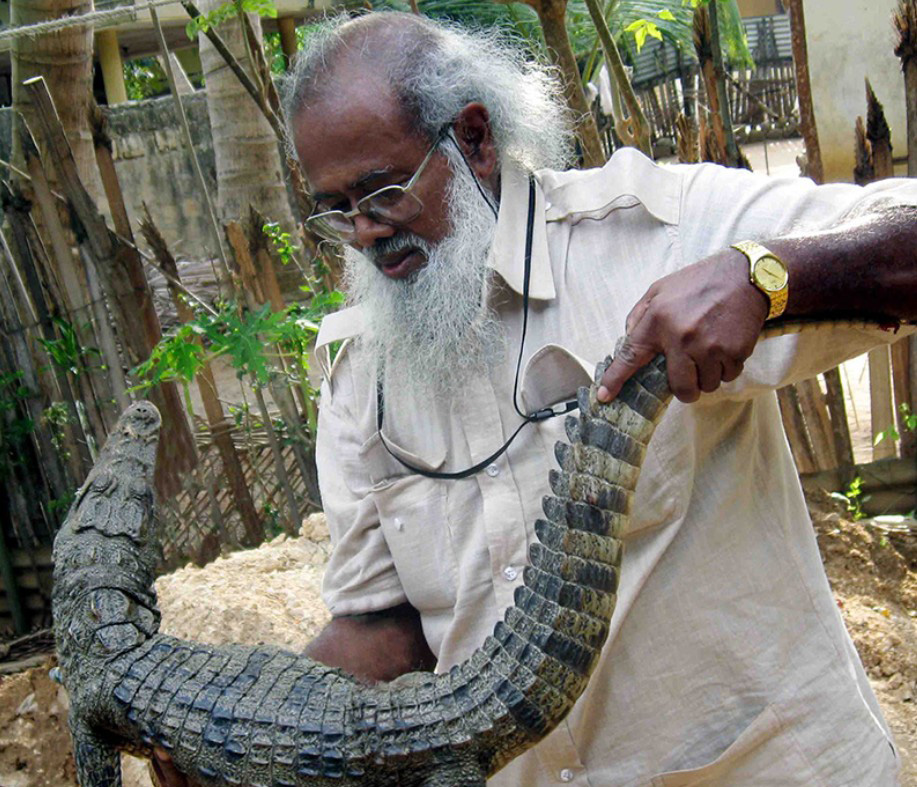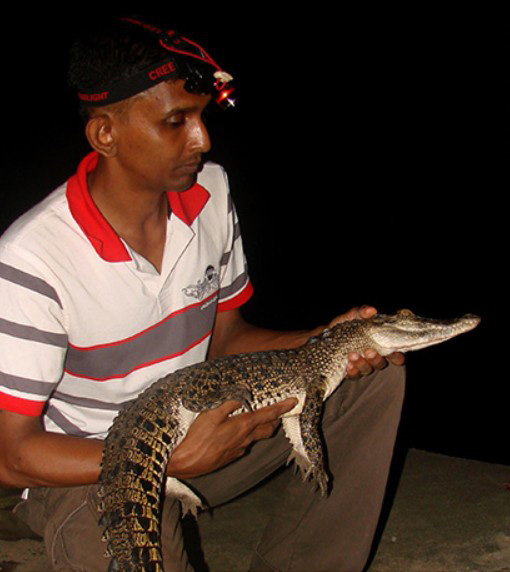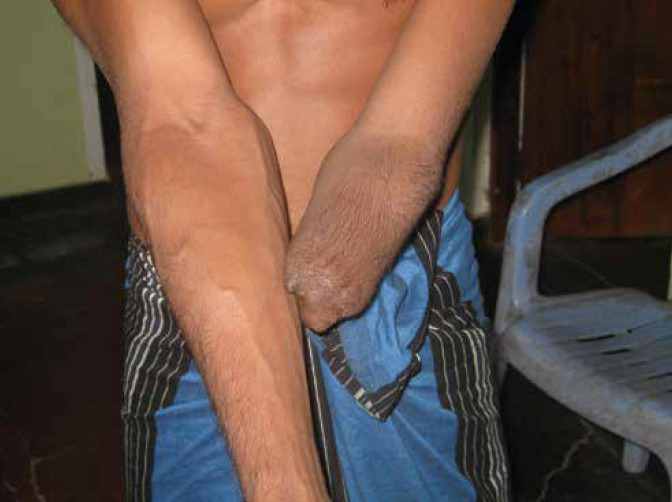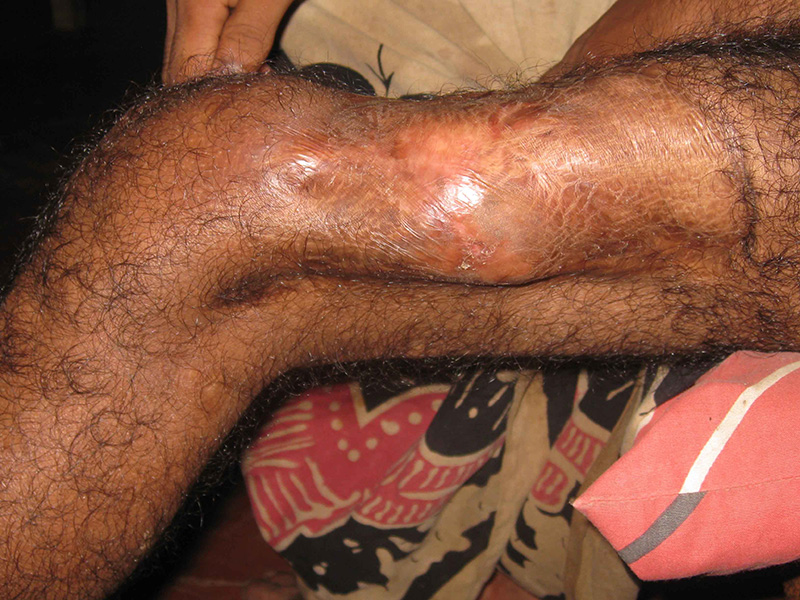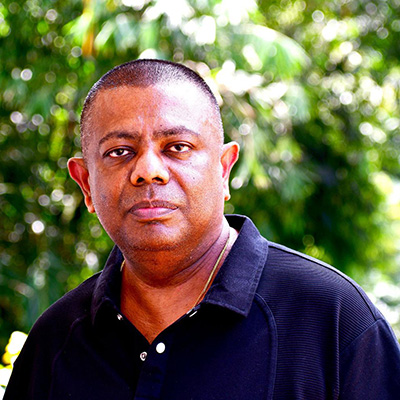Features
The JVP’s Military Battle for Power
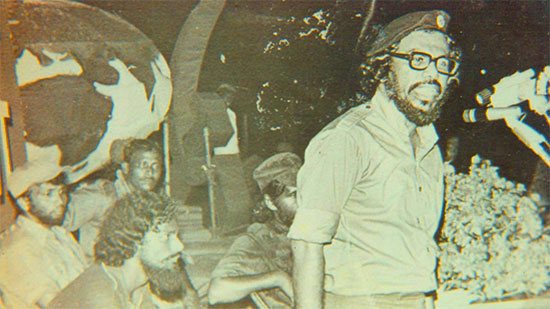
THE APRIL 1971 REVOLT – II
By Jayantha Somasundaram
The JVP evolved in the late 1960s under Rohana Wijeweera as a radical rural youth group. It believed that a socialist change in Sri Lanka could only be effected through a sudden armed insurrection launched simultaneously across the country. Recruits to the JVP underwent a series of political classes as well as military training, while the organisation clandestinely armed itself. The United Front Government responded in March 1971 with a State of Emergency, the arrest of JVP cadre and the deploying of the Army to the provinces.
In March 1971 events rapidly escalated. The JVP believed that the government was planning to use the Army to launch an all out offensive against them. And on 2nd April nine JVP leaders, six members of the Political Bureau and three District Secretaries, met at the Vidyodaya Sangaramaya at a meeting presided over by S.V.A Piyatilake. They took the decision to launch their attack at 2330 hours on 5th April. “The decision taken was to attack on a specific date at a specific time. This decision is completely in line with the evidence that the Fifth Class of the JVP…advocated that in the circumstances of our country, the best method would be to launch simultaneous attacks everywhere,” concluded the Judgement of the Criminal Justice Commission Inquiry No 1 1976.
The date of attack was relayed by pre-arranged code in the contents of a paid radio obituary notice by an unsuspecting state-owned Ceylon Broadcasting Corporation. The JVP cadres at Wellawaya however misinterpreted the instruction and launched their attack on the Wellawaya Police Station 24 hours earlier on the night of 4th April.
The initial targets were rural police stations both in order to further arm themselves and because the JVP viewed the police as the only representative of the state in the countryside. Moreover, they believed that the police and the armed forces were low on ammunition and they discounted the government’s ability to counter attack once the JVP had gained control of the countryside. Besides, the attacks on remote police stations across much of the country’s rural south, a large group also travelled north in order to rescue Wijeweera who was held in Jaffna.
Attacking with home-made weapons in groups of 25 to 30 in order to seize better arms from the police stations, the JVP believed that controlling these rural police stations would provide them with areas of military and political control, thereby denying the government access to such areas which would provide secure rear-bases for subsequent attacks by the JVP on towns and cities. Ten out of the island’s 22 Administrative Districts were battlegrounds. “Ninety two Police Stations had been attacked, damaging fifty and causing around fifty to be abandoned,” wrote Major General Anton Muttukumaru in The Military History of Ceylon.
Piyatilake was responsible for operations in Colombo. He detailed Raja Nimal an Advanced Level student to storm the Rosmead Place residence of Prime Minister Sirima Bandaranaike on the night of the 5th along with 50 student cadre, to capture the Prime Minister and transport her to a place where she would be held. However the expected vehicle and Piyatilake failed to arrive at the prearranged rendezvous in Borella and the attack did not materialise. Meanwhile unaware of the impending danger, the Prime Minister’s security advisers prevailed upon her to move to her official residence at Temple Trees, where she would be more secure.
Elsewhere in the Colombo District a major attack occurred at Hanwella, where the A4 High Level and Low Level Roads converge. Early on the morning of the 6th about 100 JVP combatants using hand bombs, Molotov Cocktails and firearms attacked the Police Station compelling its personnel to abandon their positions and flee into the surrounding jungle. The JVP captured the station’s armoury of weapons, hoisted a red flag and froze transport into Colombo. They held the town until armed police from Homagama supported by troops from Panagoda overpowered them.
The Battle for Kegalle
Athula Nimalasiri Jayasinghe, known within the Movement as Loku Athula, was in charge of the Kegalle and Kurunegala Districts. Once the decision to attack was made he moved into the area on the 3rd, meeting Area Leaders at Weliveriya and coordinating operations with detachments in Veyangoda and Mirigama. About 600 JVP combatants were deployed across the Kegalle District concentrated at Warakapola and Rambukkana.
Under Patrick Fernando, the Pindeniya detachment attacked both the local Police Station and the Bogala Graphite Mines, capturing a lorry load of explosives from the mines. On the 8th the Warakapola Police Station was successfully attacked, its weapons including two sub machine guns seized and the building set ablaze. In addition, Police Stations at Bulathkohupitiya, Aranayaka, Mawanella, Rambukkana and Dedigama were also attacked and the station at Aranayake burned down. Only Kegalle Police Station and the area surrounding it remained under Government control.
The Army could only access the interior regions of the District on the 10th and initially had to focus on removing road blocks and repairing culverts and bridges to gain mobility. When they penetrated the countryside they were frequently ambushed as in Aranayake and both sides sustained casualties. In The JVP 1969-1989 Justice A.C. Alles concludes that “the insurgents had met with considerable success in the Kegalle District.”
On the 12th at Utuwankande the Army was ambushed by the JVP using rifles and submachine guns. But the battle was turning in favour of the Army which brought to bear superior arms to put pressure on the rebels and gradually reopen the abandoned police stations in the district.
Finally on the 29th led by Loku Athula the JVP forces began their withdrawal from the District, from Balapattawa via Alawwa and then north. As they retreated in the direction of the Wilpattu Park they came under attack from the Army and from the air by Air Force helicopters. The Army finally ambushed them near Galgamuwa, killing some and capturing Loku Athula on 7th June.
The experience of the Kegalle District was replicated by the JVP in the Galle, Matara and Hambantota Districts. With the exception of Dickwella all Police Stations in the Matara District were abandoned. While in the Ambalangoda Police Area all stations, Elpitiya, Uragaha, Pitigala and Meetiyagoda fell to the JVP.
Widespread JVP attacks were also launched across the North Central Province where only the Anuradhapura Police Station was spared. As in the Kegalle District the outlying stations had to be abandoned and personnel withdrawn to Anuradhapura. However the Kekirawa Station, though attacked several times, held out. The Army was only able to move into the outlying areas of the Anuradhapura District on the 30th. Further north the Vavuniya Police Station in the Northern Province was also attacked. Less intense activity was reported in the Kandy, Badulla and Moneragala Districts.
N.Sanmugathasan in A Marxist Looks at the History of Ceylon remarked that “The rank and file (of the JVP) seems to have been honestly revolutionary, with a sense of dedication that must be admired, and a willingness to sacrifice their lives – unheard of before in Ceylon.” The first Ceylonese Army Commander General Muttukumaru wrote “Their (JVP) courage was also evident in the display of their military skills which enabled them to control many regions in the country and give battle to the armed forces in fierce guerrilla fighting.”
The military background
In November 1947 on the eve of independence, Ceylon signed a Defence Agreement with the United Kingdom. The military’s threat perception was determined by “the Government’s concern, (which) was invasion by India. The military’s focus was to have a defence force capable of meeting any external threat until assistance arrived from Britain.” In the words of Air Vice-Marshal P.H. ‘Paddy’ Mendis, who was Air Force Commander in 1971, the objective that determined the capabilities of the armed forces therefore was to “hold up an invading force of the enemy until assistance arrived from a bigger country with which we have an alliance.” (Brian Blodgett in Sri Lanka’s Military: The Search for a Mission 1949-2004)
The only military threat perceived was external; there was no anticipation of an internal military threat. Furthermore, in the wake of the 1962 abortive coup against the Sri Lanka Freedom Party (SLFP) Government, and the alleged 1966 coup against the United National Party Government, both parties that had been in power were wary of the Army which in 1970 had an authorised strength of 329 officers and 6,291 other ranks, and an annual budget of Rs 52 million (US$10mn), just 1.2% of total government expenditure.
Despite these inherent structural limitations, the Government and the Army responded swiftly, appointing regional Co-ordinating Officers in the worst affected districts. They were Colonels E.T. de Z. Abeysekera in Anuradhapura, S. D. Ratwatte in Badulla, Douglas Ramanayake in Galle and Derek Nugawella in Hambantota, Lieutenant Colonels R.R Rodrigo in Jaffna, Cyril Ranatunga in Kegalle, D.J.de S Wickremasinghe in Matara, Tissa Weeratunga in Moneragala and Dennis Hapugalle in Vavuniya.
The Ceylon Volunteer Force was immediately mobilised, and the first military casualty was Staff Sergeant Jothipala of the 2nd Volunteer Battalion, Sinha Regiment [2(V)SR], who was killed at Thulhiriya in the Kurunegala District on the first day of the insurrection. While Sandhurst-trained Major Noel Weerakoon of the 4th Regiment, Ceylon Artillery was the first officer to be killed whilst leading an ammunition convoy from Vavuniya to the besieged town of Anuradhapura; he was wounded when his convoy was ambushed and later succumbed to his injuries.
The battle rages
In 1971 the Royal Ceylon Air Force (RCyAF) consisted of three squadrons: No. 1 Flying Training Squadron with nine Chipmunk trainers based at China Bay, No. 2 Transport Sq. equipped with five Doves, 4 Herons and three Pioneer fixed wing aircraft and four helicopters and No. 3 Reconnaissance Sq. with Cessna aircraft. In the 1960s Britain had gifted five Hunting Jet Provost T51s jet trainers which had gone out of service by 1971.
Beginning at 0900 hours on 5th April the Jet Provost, which were in storage at China Bay, began operating out of this airbase. Armed with Browning machine guns and rockets, they carried out air to ground attacks using 60 lb rockets. The three Bell 206A Jet Ranger helicopters protected by Bren Guns airlifted 36,500 lb of ammunition during April to critical police stations. In addition the Doves carried out supply missions and during the course of April, 900 soldiers and 100,000 lb of equipment were transported by the RCyAF.
The JVP seized parts of the Colombo-Kandy A1 Trunk Route at Warakapola and Kegalle, cutting off the main artery between Colombo and the tea growing highlands. In response the Jet Provost had to mount aerial attacks on the key bridge at Alawwa which led to the downing of a Jet Provost and the death of her pilot.
If not for the premature attack in Wellawaya which resulted in the Police and Military around the country being placed on high alert “the situation would have been very grave for not only would several Police Stations have been captured, but the JVP would have been able to arm itself with modern weapons,” wrote Justice Alles.
Desperate for arms and ammunition in the first days of the rebellion, the Government aware that a Chinese cargo vessel bound for Tanzania with an arms shipment was currently in Colombo Harbour, unsuccessfully appealed to both Beijing and Dar-es-Salaam to make these arms available to Sri Lanka.
International support
As rural police stations fell, the government abandoned others, regrouping its limited forces and anxious to protect the towns and cities. This tactic paid off. The JVP only had equipment captured from police stations. They did not go on to overrun military camps nor capture their more sophisticated weapons. While the JVP did control parts of Kegalle, Elpitiya, Deniyaya and Kataragama uncontested, the Army replenished its meagre stocks of weapons.
Wijeweera had focussed solely on a single decisive blow against the Government. There was no provision to conduct even a short term guerrilla operation, or an attempt to lead a peasant uprising. And during the first 72 hours his strategy appeared to be working. What dramatically altered the balance of forces against the JVP was the immediate and sustained influx of military equipment that flowed in from overseas to enable the armed forces to turn the tide in their favour.
Within four days of the JVP attack, Air Ceylon’s Trident took off from Singapore carrying a consignment of small arms provided by Britain from its base there. The following day the UK agreed to supply six Bell-47G Jet Ranger helicopters armed with 7.62mm machine guns. On 12th April on board a US Air Force Lockheed C-141 Starlifter, Washington shipped out critical spare parts for the RCyAF helicopters which were flying twelve hour days. And at Colombo’s request New Delhi on the 14th sent six Indian Air Force Aérospatiale SA 315B Lama utility helicopters with crews to Katunayake Air Force Base, along with troops to guard them as well as arms, ammunition and grenades. They would remain in-country for three months.
On the 17th Air Ceylon flew in nine tons of military equipment which the Soviet Union made available from supplies in Cairo. While on the 22nd a Soviet Air Force Antonov AN-22 transporter arrived with two Kamov Ka-26 rescue helicopters and five Mikoyan-Gurevich MiG-15 jet fighters and one MiG-17 high-subsonic fighter. The Soviet aircraft were accompanied by 200 trainers and ground crew.
China, Australia, Pakistan and Yugoslavia would also send arms and equipment. Colombo’s Non Aligned foreign policy which enabled it to source and receive military weapons and equipment from countries across the globe had succeeded. However the disparate array of equipment would pose a logistics dilemma for the military.
The sudden influx of arms and ammunition rapidly altered the balance of power against the JVP. For example the Army took Yugoslav artillery into Kegalle to flush out the rebels. And around 16,500 JVP members were captured, arrested or surrendered. The remaining combatants withdrew into jungle sanctuaries in the Kegalle, Elpitiya, Deniyaya and Kataragama areas.
Meanwhile there were reports that the JVP were endeavouring to bring weapons in by sea. But the Royal Ceylon Navy’s frigate and Thorneycroft boats could not secure the island’s territory nor prevent supplies reaching the rebels. This compelled Colombo to rely on the Indian Navy which sent three of its Hunt-class escort destroyers, INS Ganga, INS Gomathi and INS Godawari to patrol Ceylon’s maritime perimeter. In Sri Lanka Navy: Enhanced Role and New Challenges Professor Gamini Keerawella and Lieutenant Commander S. Hemachandre explain that “Sri Lanka’s dependency on the Indian Navy during the Insurgency to patrol its sea frontier in order to prevent arms supply to the Insurgents, was total.”
At Anuradhapura the JVP had established a base camp as well as six sub camps in the surrounding jungle where weapons, explosives and food had been stored. JVP operations in the Rajangana and Tambuttegama areas were controlled from this base camp. A platoon of 1CLI armed with 82mm mortars was sent to Anuradhapura in May and participated in Operation Otthappuwa, under 1CLI 2iC Major Jayawardena to take control of this area. By the end of May the insurrection was completely crushed.
Some counter insurgency operations however continued into the following year. A-Company 1CLI established a forward base in Horowapatana as late as November 1972 from where they carried out combing out operations until April 1973 while 1CLI’s D-Company closed its Kegalle operations only in December 1974.
Outcomes
The international media reported that summary executions had taken place. Writing from Colombo in the Nouvel Observateur on 23rd May, Rene Dumont said “from the Victoria Bridge on 13th April I saw corpses floating down the (Kelani) River which flows through the north of the capital watched by hundreds of motionless people. The Police who had killed them let them float downstream to terrorise the population.” The New York Times in its 15th April edition said that “many were found to have been shot in the back.”
Lieutenant Colonel Cyril Ranatunga commanding troops in Kegalle was emphatic. “We have learned too many lessons from Vietnam and Malaysia. We must destroy them completely.” While another officer was quoted alongside him in the International Herald Tribune of 20th April as saying “Once we are convinced prisoners are insurgents we take them to a cemetery and dispose of them.” And the Washington Post on 9th May quoted a major who said that “we have never had the opportunity to fight a real war in this country. All these years we have been firing at dummies, now we are being put to use.”
One of these public executions became a celebrated case, the brutal murder of Premawathi Manamperi of Kataragama. She had been crowned festival queen at the previous year’s Sinhala New Year celebration. Two soldiers, Lieutenant Wijeysooria and Sergeant Ratnayaka would be convicted, but both claimed their orders were: “Take no prisoners; bump them off, liquidate them.” (Jayasumana Obeysekara Revolutionary Movements in Ceylon in Imperialism and Revolution in South Asia edited by Kathleen Gough and Hari P. Sharma)
Janice Jiggins notes in Caste and Family in the Politics of the Sinhalese 1947-1976 that “Many in the armed services took the view that the fighting was an expression of anti-Govigama resentment and in certain areas went into low caste villages and arrested all the youth, regardless of participation.”
In the aftermath of the insurgency the armed forces expanded. The Air Force which had 1,400 personnel in 1971 grew to 3,100 by 1976. New units were raised: a Special Police Reserve Force, a Volunteer RCyAF and a new Field Security Detachment targeting subversion. The latter was placed under Lieutenant Colonel Anurudha Ratwatte 2(V) SR, the Security Liaison Officer to the Prime Minister. While a new Volunteer Army unit the National Service Regiment, targeting recruits over 35 years provided according to Fred Halliday “a damning sign that the whole of the country’s youth was in opposition to (the Government).”
The JVP uprising broke the back of the left parties which were trapped politically by the insurrection which they could only denounce at the cost of their long term influence. The SLFP too was isolated from its electorate due to the harsh measures adopted; curfew, censorship, trial without jury, postponement of elections, suspension of habeas corpus and other civil rights. Their Government suffered a devastating defeat at the next elections in 1977.
The uprising questioned the efficacy of a parliamentary system that could not accommodate a generation of educated youth, nor keep politicians aware of their needs and strengths. The decades-old mass national parties seemed to have no place for them. And the JVP charge that the leaders in parliament were of a different class and therefore they themselves of a different sub culture, seemed valid.
Features
When floods strike: How nations keep food on the table
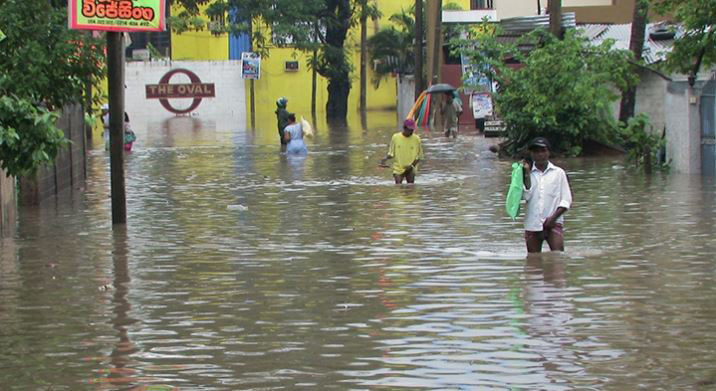
Insights from global adaptation strategies
Sri Lanka has been heavily affected by floods, and extreme flooding is rapidly becoming one of the most disruptive climate hazards worldwide. The consequences extend far beyond damaged infrastructure and displaced communities. The food systems and supply networks are among the hardest hit. Floods disrupt food systems through multiple pathways. Croplands are submerged, livestock are lost, and soils become degraded due to erosion or sediment deposition. Infrastructural facilities like roads, bridges, retail shops, storage warehouses, and sales centres are damaged or rendered inaccessible. Without functioning food supply networks, even unaffected food-producing regions struggle to continue daily lives in such disasters. Poor households, particularly those dependent on farming or informal rural economies, face sharp food price increases and income loss, increasing vulnerability and food insecurity.
Many countries now recognie that traditional emergency responses alone are no longer enough. Instead, they are adopting a combination of short-term stabilisation measures and long-term strategies to strengthen food supply chains against recurrent floods. The most common immediate response is the provision of emergency food and cash assistance. Governments, the World Food Programme, and other humanitarian organisations often deliver food, ready-to-eat rations, livestock feed, and livelihood support to affected communities.
Alongside these immediate measures, some nations are implementing long-term strategic actions. These include technology- and data-driven approaches to improve flood preparedness. Early warning systems, using satellite data, hydrological models, and advanced weather forecasting, allow farmers and supply chain operators to prepare for potential disruptions. Digital platforms provide market intelligence, logistics updates, and risk notifications to producers, wholesalers, and transporters. This article highlights examples of such strategies from countries that experience frequent flooding.
China: Grain Reserves and Strategic Preparedness
China maintains a large strategic grain reserve system for rice, wheat, and maize; managed by NFSRA-National Food and Strategic Reserves Administration and Sinograin (China Grain Reserves Corporation (Sinograin Group), funded by the Chinese government, that underpins national food security and enables macro-control of markets during supply shocks. Moreover, improvements in supply chain digitization and hydrological monitoring, the country has strengthened its ability to maintain stable food availability during extreme weather events.
Bangladesh: Turning Vulnerability into Resilience
In recent years, Bangladesh has stood out as one of the world’s most flood-exposed countries, yet it has successfully turned vulnerability into adaptive resilience. Floating agriculture, flood-tolerant rice varieties, and community-run grain reserves now help stabilise food supplies when farmland is submerged. Investments in early-warning systems and river-basin management have further reduced crop losses and protected rural livelihoods.
Netherlands, Japan: High-Tech Models of Flood Resilience
The Netherlands offers a highly technical model. After catastrophic flooding in 1953, the country completely redesigned its water governance approach. Farmland is protected behind sea barriers, rivers are carefully controlled, and land-use zoning is adaptive. Vertical farming and climate-controlled greenhouses ensure year-round food production, even during extreme events. Japan provides another example of diversified flood resilience. Following repeated typhoon-induced floods, the country shifted toward protected agriculture, insurance-backed farming, and automated logistics systems. Cold storage networks and digital supply tracking ensure that food continues to reach consumers, even when roads are cut off. While these strategies require significant capital and investment, their gradual implementation provides substantial long-term benefits.
Pakistan, Thailand, Indonesia, and Vietnam: Reform in Response to Recurrent Floods
In contrast, Pakistan and Thailand illustrate both the consequences of climate vulnerability and the benefits of proactive reform. The 2022 floods in Pakistan submerged about one-third of the country, destroying crops and disrupting trade networks. In response, the country has placed greater emphasis on climate-resilient farming, water governance reforms, and satellite-based crop monitoring. Pakistan as well as India is promoting crop diversification and adjusting planting schedules to help farmers avoid the peak monsoon flood periods.
Thailand has invested in flood zoning and improved farm infrastructure that keep markets supplied even during severe flooding. Meanwhile, Indonesia and Vietnam are actively advancing flood-adapted land-use planning and climate-resilient agriculture. For instance, In Vietnam’s Mekong Delta, pilot projects integrate flood-risk mapping, adaptive cropping strategies, and ecosystem-based approaches to reduce vulnerability in agricultural and distribution areas. In Indonesia, government-supported initiatives and regional projects are strengthening flood-risk-informed spatial planning, adaptive farming practices, and community-based water management to improve resilience in flood-prone regions. (See Figure 1)
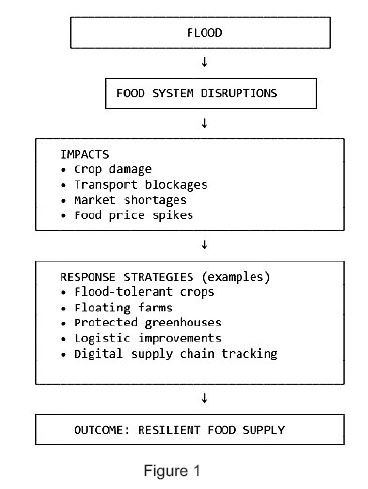 The Global Lesson: Resilience Requires Early Investment
The Global Lesson: Resilience Requires Early Investment
The global evidence is clear: countries that invest early in climate-adaptive agriculture and resilient logistics are better able to feed their populations, even during extreme floods. Building a resilient future depends not only on how we grow food but also on how we protect, store, and transport it. Strengthening infrastructure is therefore central to stabilising food supply chains while maintaining food quality, even during prolonged disruptions. Resilient storage systems, regional grain reserves, efficient cold chains, improved farming infrastructure, and digital supply mapping help reduce panic buying, food waste, and price shocks after floods, while ensuring that production capacity remains secure.
Persistent Challenges
However, despite these advances, many flood-exposed countries still face significant challenges. Resources are often insufficient to upgrade infrastructure or support vulnerable rural populations. Institutional coordination across the agriculture, disaster management, transport, and environmental sectors remains weak. Moreover, the frequency and scale of climate-driven floods are exceeding the design limits of older disaster-planning frameworks. As a result, the gap between exposure and resilience continues to widen. These challenges are highly relevant to Sri Lanka as well and require deliberate, gradual efforts to phase them out.
The Role of International Trade and global markets
When domestic production falls in such situations, international trade serves as an important buffer. When domestic production is temporarily reduced, imports and regional trade flows can help stabilise food availability. Such examples are available from other countries. For instance, In October 2024, floods in Bangladesh reportedly destroyed about 1.1 million tonnes of rice. In response, the government moved to import large volumes of rice and allowed accelerated or private-sector imports of rice to stabilize supply and curb food price inflation. This demonstrates how, when domestic production fails, international trade/livestock/food imports (from trade partners) acted as a crucial buffer to ensure availability of staple food for the population. However, this approach relies on well-functioning global markets, strong diplomatic relationships, and adequate foreign exchange, making it less reliable for economically fragile nations. For example, importing frozen vegetables to Sri Lanka from other countries can help address supply shortages, but considerations such as affordability, proper storage and selling mechanisms, cooking guidance, and nutritional benefits are essential, especially when these foods are not widely familiar to local populations.
Marketing and Distribution Strategies during Floods
Ensuring that food reaches consumers during floods requires innovative marketing and distribution strategies that address both supply- and demand-side challenges. Short-term interventions often include direct cash or food transfers, mobile markets, and temporary distribution centres in areas where conventional marketplaces become inaccessible. Price stabilisation measures, such as temporary caps or subsidies on staple foods, help prevent sharp inflation and protect vulnerable households. Awareness campaigns also play a role by educating consumers on safe storage, cooking methods, and the nutritional value of unfamiliar imported items, helping sustain effective demand.
Some countries have integrated technology to support these efforts; in this regard, adaptive supply chain strategies are increasingly used. Digital platforms provide farmers, wholesalers, and retailers with real-time market information, logistics updates, and flood-risk alerts, enabling them to reroute deliveries or adjust production schedules. Diversified delivery routes, using alternative roads, river transport, drones, or mobile cold-storage units, have proven essential for maintaining the flow of perishable goods such as vegetables, dairy, and frozen products. A notable example is Japan, where automated logistics systems and advanced cold-storage networks help keep supermarkets stocked even during severe typhoon-induced flooding.
The Importance of Research, Coordination, and Long-Term Commitment
Global experience also shows that research and development, strong institutional coordination, and sustained national commitment are fundamental pillars of flood-resilient food systems. Countries that have successfully reduced the impacts of recurrent floods consistently invest in agricultural innovation, cross-sector collaboration, and long-term planning.
Awareness Leads to Preparedness
As the summary, global evidence shows that countries that act early, plan strategically, and invest in resilience can protect both people and food systems. As Sri Lanka considers long-term strategies for food security under climate change, learning from flood-affected nations can help guide policy, planning, and public understanding. Awareness is the first step which preparedness must follow. These international experiences offer valuable lessons on how to protect food systems through proactive planning and integrated actions.
(Premaratne (BSc, MPhil, LLB) isSenior Lecturer in Agricultural Economics Department of Agricultural Systems, Faculty of Agriculture, Rajarata University. Views are personal.)
Key References·
Cabinet Secretariat, Government of Japan, 2021. Fundamental Plan for National Resilience – Food, Agriculture, Forestry and Fisheries / Logistics & Food Supply Chains. Tokyo: Cabinet Secretariat.
· Delta Programme Commissioner, 2022. Delta Programme 2023 (English – Print Version). The Hague: Netherlands Delta Programme.
· Hasanuddin University, 2025. ‘Sustainable resilience in flood-prone rice farming: adaptive strategies and risk-sharing around Tempe Lake, Indonesia’, Sustainability. Available at: https://www.mdpi.com/2071-1050/17/6/2456 [Accessed 3 December 2025].
· Mekong Urban Flood Resilience and Drainage Programme (TUEWAS), 2019–2021. Integrated urban flood and drainage planning for Mekong cities. TUEWAS / MRC initiative.
· Ministry of Agriculture and Rural Affairs, People’s Republic of China, 2025. ‘China’s summer grain procurement surpasses 50 mln tonnes’, English Ministry website, 4 July.
· National Food and Strategic Reserves Administration (China) 2024, ‘China purchases over 400 mln tonnes of grain in 2023’, GOV.cn, 9 January. Available at: https://english.www.gov.cn/archive/statistics/202401/09/content_WS659d1020c6d0868f4e8e2e46.html
· Pakistan: 2022 Floods Response Plan, 2022. United Nations / Government of Pakistan, UN Digital Library.
· Shigemitsu, M. & Gray, E., 2021. ‘Building the resilience of Japan’s agricultural sector to typhoons and heavy rain’, OECD Food, Agriculture and Fisheries Papers, No. 159. Paris: OECD Publishing.
· UNDP & GCF, 2023. Enhancing Climate Resilience in Thailand through Effective Water Management and Sustainable Agriculture (E WMSA): Project Factsheet. UNDP, Bangkok.
· United Nations Development Programme (UNDP), 2025. ‘Rice Bank revives hope in flood hit hill tracts, Bangladesh’, UNDP, 19 June.
· World Bank, 2022. ‘Bangladesh: World Bank supports food security and higher incomes of farmers vulnerable to climate change’, World Bank press release, 15 March.
Features
Can we forecast weather precisely?
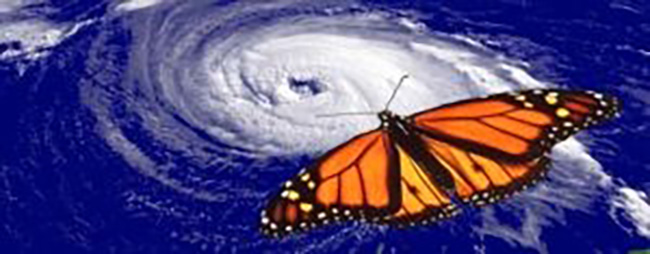
Weather forecasts are useful. People attentively listen to them but complain that they go wrong or are not taken seriously. Forecasts today are more probabilistically reliable than decades ago. The advancement of atmospheric science, satellite imaging, radar maps and instantly updated databases has improved the art of predicting weather.
Yet can we predict weather patterns precisely? A branch of mathematics known as chaos theory says that weather can never be foretold with certainty.
The classical mechanics of Issac Newton governing the motion of all forms of matter, solid, liquid or gaseous, is a deterministic theory. If the initial conditions are known, the behaviour of the system at later instants of time can be precisely predicted. Based on this theory, occurrences of solar eclipses a century later have been predicted to an accuracy of minutes and seconds.
The thinking that the mechanical behaviour of systems in nature could always be accurately predicted based on their state at a previous instant of time was shaken by the work of the genius French Mathematician Henri Poincare (1864- 1902).
Eclipses are predicted with pinpoint accuracy based on analysis of a two-body system (Earth- Moon) governed by Newton’s laws. Poincare found that the equivalent problem of three astronomical bodies cannot be solved exactly – sometimes even the slightest variation of an initial condition yields a drastically different solution.
A profound conclusion was that the behaviour of physical systems governed by deterministic laws does not always allow practically meaningful predictions because even a minute unaccountable change of parameters leads to completely different results.
Until recent times, physicists overlooked Poincare’s work and continued to believe that the determinism of the laws of classical physics would allow them to analyse complex problems and derive future happenings, provided necessary computations are facilitated. When computers became available, the meteorologists conducted simulations aiming for accurate weather forecasting. The American mathematician Edward Lorenz, who turned into a reputed meteorologist, carried out such studies in the early 1960s, arrived at an unexpected result. His equations describing atmospheric dynamics demonstrated a strange behaviour. He found that even a minute change (even one part in a million) in initial parameters leads to a completely different weather pattern in the atmosphere. Lorenz announced his finding saying, A flap of a butterfly wing in one corner of the world could cause a cyclone in a far distant location weeks later! Lorenz’s work opened the way for the development branch of mathematics referred to as chaos theory – an expansion of the idea first disclosed by Henri Poincare.
We understand the dynamics of a cyclone as a giant whirlpool in the atmosphere, how it evolves and the conditions favourable for their origination. They are created as unpredictable thermodynamically favourable relaxation of instabilities in the atmosphere. The fundamental limitations dictated by chaos theory forbid accurate forecasting of the time and point of its appearance and the intensity. Once a cyclone forms, it can be tracked and the path of movement can be grossly ascertained by frequent observations. However, absolutely certain predictions are impossible.
A peculiarity of weather is that the chaotic nature of atmospheric dynamics does not permit ‘long – term’ forecasting with a high degree of certainty. The ‘long-term’ in this context, depending on situation, could be hours, days or weeks. Nonetheless, weather forecasts are invaluable for preparedness and avoiding unlikely, unfortunate events that might befall. A massive reaction to every unlikely event envisaged is also not warranted. Such an attitude leads to social chaos. The society far more complex than weather is heavily susceptible to chaotic phenomena.
by Prof. Kirthi Tennakone (ktenna@yahoo.co.uk)
Features
When the Waters Rise: Floods, Fear and the ancient survivors of Sri Lanka
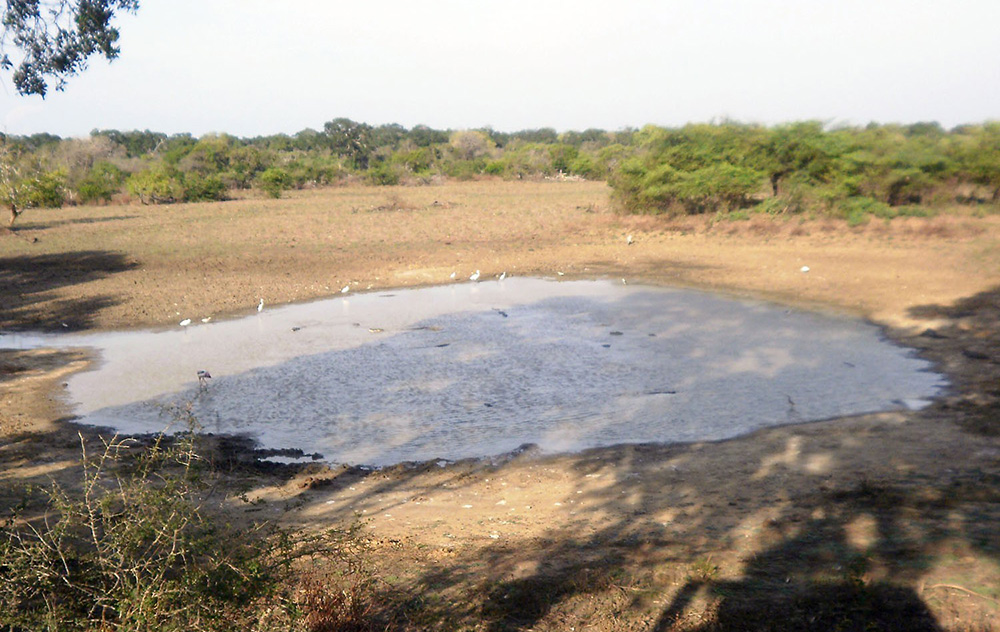
The water came quietly at first, a steady rise along the riverbanks, familiar to communities who have lived beside Sri Lanka’s great waterways for generations. But within hours, these same rivers had swollen into raging, unpredictable forces. The Kelani Ganga overflowed. The Nilwala broke its margins. The Bentara, Kalu, and Mahaweli formed churning, chocolate-brown channels cutting through thousands of homes.
When the floods finally began to recede, villagers emerged to assess the damage, only to be confronted by another challenge: crocodiles. From Panadura’s back lanes to the suburbs of Colombo, and from the lagoons around Kalutara to the paddy fields of the dry zone, reports poured in of crocodiles resting on bunds, climbing over fences, or drifting silently into garden wells.
For many, these encounters were terrifying. But to Sri Lanka’s top herpetologists, the message was clear: this is what happens when climate extremes collide with shrinking habitats.
“Crocodiles are not invading us … we are invading floodplains”
Sri Lanka’s foremost crocodile expert, Dr. Anslem de Silva, Regional Chairman for South Asia and Iran of the IUCN/SSC Crocodile Specialist Group, has been studying crocodiles for over half a century. His warning is blunt.
“When rivers turn into violent torrents, crocodiles simply seek safety,” he says. “They avoid fast-moving water the same way humans do. During floods, they climb onto land or move into calm backwaters. People must understand this behaviour is natural, not aggressive.”
In the past week alone, Saltwater crocodiles have been sighted entering the Wellawatte Canal, drifting into the Panadura estuary, and appearing unexpectedly along Bolgoda Lake.
“Saltwater crocodiles often get washed out to sea during big floods,” Dr. de Silva explains. “Once the current weakens, they re-enter through the nearest lagoon or canal system. With rapid urbanisation along these waterways, these interactions are now far more visible.”
- An adult Salt Water Crocodile (Crocodylus porosus) (Photo -Madura de Silva)
- Adult Mugger (Crocodylus plaustris) Photo -Laxhman Nadaraja
- A Warning sign board
- A Mugger holding a a large Russell ’s viper (Photo- R. M. Gunasinghe)
- Anslem de Silva
- Suranjan Karunarathna
This clash between wildlife instinct and human expansion forms the backdrop of a crisis now unfolding across the island.
A conflict centuries old—now reshaped by climate change
Sri Lanka’s relationship with crocodiles is older than most of its kingdoms. The Cūḷavaṃsa describes armies halted by “flesh-eating crocodiles.” Ancient medical texts explain crocodile bite treatments. Fishermen and farmers around the Nilwala, Walawe, Maduganga, Batticaloa Lagoon, and Kalu Ganga have long accepted kimbula as part of their environment.
But the modern conflict has intensified dramatically.
A comprehensive countrywide survey by Dr. de Silva recorded 150 human–crocodile attacks, with 50 fatal, between 2008 and 2010. Over 52 percent occurred when people were bathing, and 83 percent of victims were men engaged in routine activities—washing, fishing, or walking along shallow margins.
Researchers consistently emphasise: most attacks happen not because crocodiles are unpredictable, but because humans underestimate them.
Yet this year’s flooding has magnified risks in new ways.
“Floods change everything” — Dr. Nimal D. Rathnayake
Herpetologist Dr. Nimal Rathnayake says the recent deluge cannot be understood in isolation.
“Floodwaters temporarily expand the crocodile’s world,” he says. “Areas people consider safe—paddy boundaries, footpaths, canal edges, abandoned land—suddenly become waterways.”
Once the water retreats, displaced crocodiles may end up in surprising places.
“We’ve documented crocodiles stranded in garden wells, drainage channels, unused culverts and even construction pits. These are not animals trying to attack. They are animals trying to survive.”
According to him, the real crisis is not the crocodile—it is the loss of wetlands, the destruction of natural river buffers, and the pollution of river systems.
“When you fill a marsh, block a canal, or replace vegetation with concrete, you force wildlife into narrower corridors. During floods, these become conflict hotspots.”
Past research by the Crocodile Specialist Group shows that more than 300 crocodiles have been killed in retaliation or for meat over the past decade. Such killings spike after major floods, when fear and misunderstanding are highest.
“Not monsters—ecosystem engineers” — Suranjan Karunaratne
On social media, flood-displaced crocodiles often go viral as “rogue beasts.” But conservationist Suranjan Karunaratne, also of the IUCN/SSC Crocodile Specialist Group, says such narratives are misleading.
“Crocodiles are apex predators shaped by millions of years of evolution,” he says. “They are shy, intelligent animals. The problem is predictable human behaviour.”
In countless attack investigations, Karunaratne and colleagues found a repeated pattern: the Three Sames—the same place, the same time, the same activity.
“People use the same bathing spot every single day. Crocodiles watch, learn, and plan. They hunt with extraordinary patience. When an attack occurs, it’s rarely random. It is the culmination of observation.”
He stresses that crocodiles are indispensable to healthy wetlands. They: control destructive catfish populations, recycle nutrients, clean carcasses and diseased fish, maintain biodiversity, create drought refuges through burrows used by amphibians and reptiles.
“Removing crocodiles destroys an entire chain of ecological services. They are not expendable.”
Karunaratne notes that after the civil conflict, Mugger populations in the north rebounded—proof that crocodiles recover when given space, solitude, and habitat.
Floods expose a neglected truth: CEEs save lives—if maintained In high-risk communities, Crocodile Exclusion Enclosures (CEEs) are often the only physical barrier between people and crocodiles. Built along riverbanks or tanks, these enclosures allow families to bathe, wash, and collect water safely.
Yet Dr. de Silva recounts a tragic incident along the Nilwala River where a girl was killed inside a poorly maintained enclosure. A rusted iron panel had created a hole just large enough for a crocodile to enter.
“CEEs are a life-saving intervention,” he says. “But they must be maintained. A neglected enclosure is worse than none at all.”
Despite their proven effectiveness, many CEEs remain abandoned, broken or unused.
Climate change is reshaping crocodile behaviour—and ours
Sri Lanka’s floods are no longer “cycles” as described in folklore. They are increasingly intense, unpredictable and climate-driven. The warming atmosphere delivers heavier rainfall in short bursts. Deforested hillsides and filled wetlands cannot absorb it.
Rivers swell rapidly and empty violently.
Crocodiles respond as they have always done: by moving to calmer water, by climbing onto land, by using drainage channels, by shifting between lagoons and canals, by following the shape of the water.
But human expansion has filled, blocked, or polluted these escape routes.
What once were crocodile flood refuges—marshes, mangroves, oxbow wetlands and abandoned river channels—are now housing schemes, fisheries, roads, and dumpsites.
Garbage, sand mining and invasive species worsen the crisis
The research contained in the uploaded reports paints a grim but accurate picture. Crocodiles are increasingly seen around garbage dumps, where invasive plants and waste accumulate. Polluted water attracts fish, which in turn draw crocodiles.
Excessive sand mining in river mouths and salinity intrusion expose crocodile nesting habitats. In some areas, agricultural chemicals contaminate wetlands beyond their natural capacity to recover.
In Borupana Ela, a short study found 29 Saltwater crocodiles killed in fishing gear within just 37 days.
Such numbers suggest a structural crisis—not a series of accidents.
Unplanned translocations: a dangerous human mistake
For years, local authorities attempted to reduce conflict by capturing crocodiles and releasing them elsewhere. Experts say this was misguided.
“Most Saltwater crocodiles have homing instincts,” explains Karunaratne. “Australian studies show many return to their original site—even if released dozens of kilometres away.”
Over the past decade, at least 26 Saltwater crocodiles have been released into inland freshwater bodies—home to the Mugger crocodile. This disrupts natural distribution, increases competition, and creates new conflict zones.
Living with crocodiles: a national strategy long overdue
All three experts—Dr. de Silva, Dr. Rathnayake and Karunaratne—agree that Sri Lanka urgently needs a coordinated, national-level mitigation plan.
* Protect natural buffers
Replant mangroves, restore riverine forests, enforce river margin laws.
* Maintain CEEs
They must be inspected, repaired and used regularly.
* Public education
Villagers should learn crocodile behaviour just as they learn about monsoons and tides.
* End harmful translocations
Let crocodiles remain in their natural ranges.
* Improve waste management
Dumps attract crocodiles and invasive species.
* Incentivise community monitoring
Trained local volunteers can track sightings and alert authorities early.
* Integrate crocodile safety into disaster management
Flood briefings should include alerts on reptile movement.
“The floods will come again. Our response must change.”
As the island cleans up and rebuilds, the deeper lesson lies beneath the brown floodwaters. Crocodiles are not new to Sri Lanka—but the conditions we are creating are.
Rivers once buffered by mangroves now rush through concrete channels. Tanks once supporting Mugger populations are choked with invasive plants. Wetlands once absorbing floodwaters are now levelled for construction.
Crocodiles move because the water moves. And the water moves differently today.
Dr. Rathnayake puts it simply:”We cannot treat every flooded crocodile as a threat to be eliminated. These animals are displaced, stressed, and trying to survive.”
Dr. de Silva adds:”Saving humans and saving crocodiles are not competing goals. Both depend on understanding behaviour—ours and theirs.”
And in a closing reflection, Suranjan Karunaratne says:”Crocodiles have survived 250 million years, outliving dinosaurs. Whether they survive the next 50 years in Sri Lanka depends entirely on us.”
For now, as the waters recede and the scars of the floods remain, Sri Lanka faces a choice: coexist with the ancient guardians of its waterways, or push them into extinction through fear, misunderstanding and neglect.
By Ifham Nizam
-
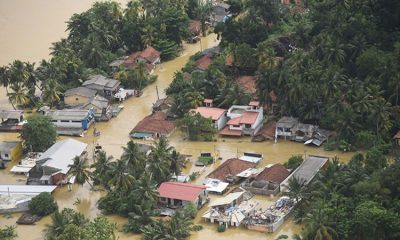
 News7 days ago
News7 days agoWeather disasters: Sri Lanka flooded by policy blunders, weak enforcement and environmental crime – Climate Expert
-
News4 days ago
Lunuwila tragedy not caused by those videoing Bell 212: SLAF
-
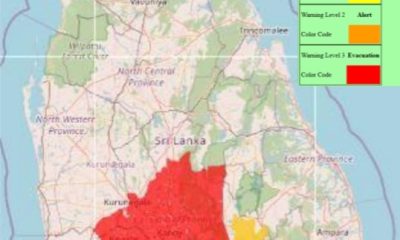
 News3 days ago
News3 days agoLevel III landslide early warning continue to be in force in the districts of Kandy, Kegalle, Kurunegala and Matale
-
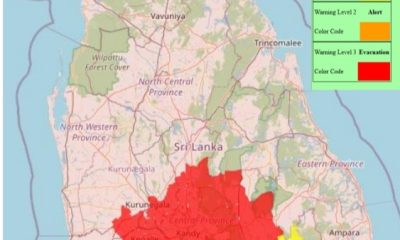
 Latest News5 days ago
Latest News5 days agoLevel III landslide early warnings issued to the districts of Badulla, Kandy, Kegalle, Kurunegala, Matale and Nuwara-Eliya
-
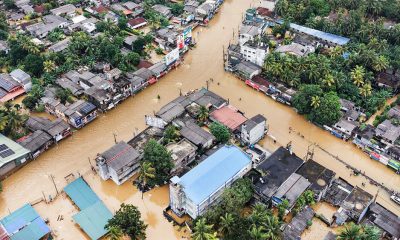
 Features5 days ago
Features5 days agoDitwah: An unusual cyclone
-

 Latest News5 days ago
Latest News5 days agoUpdated Payment Instructions for Disaster Relief Contributions
-

 Latest News6 days ago
Latest News6 days agoLandslide Early Warnings issued to the Districts of Badulla, Colombo, Gampaha, Kalutara, Kandy, Kegalle, Kurunegala, Matale, Moneragala, Nuwara Eliya and Ratnapura
-
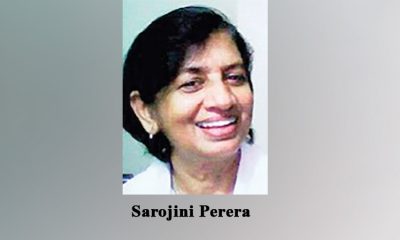
 News15 hours ago
News15 hours agoA 6th Year Accolade: The Eternal Opulence of My Fair Lady


